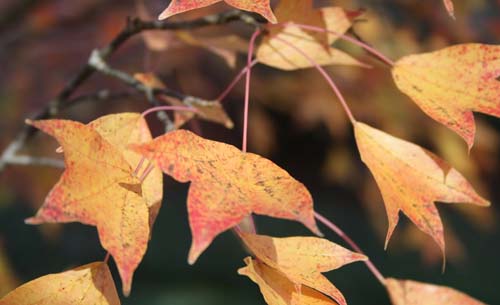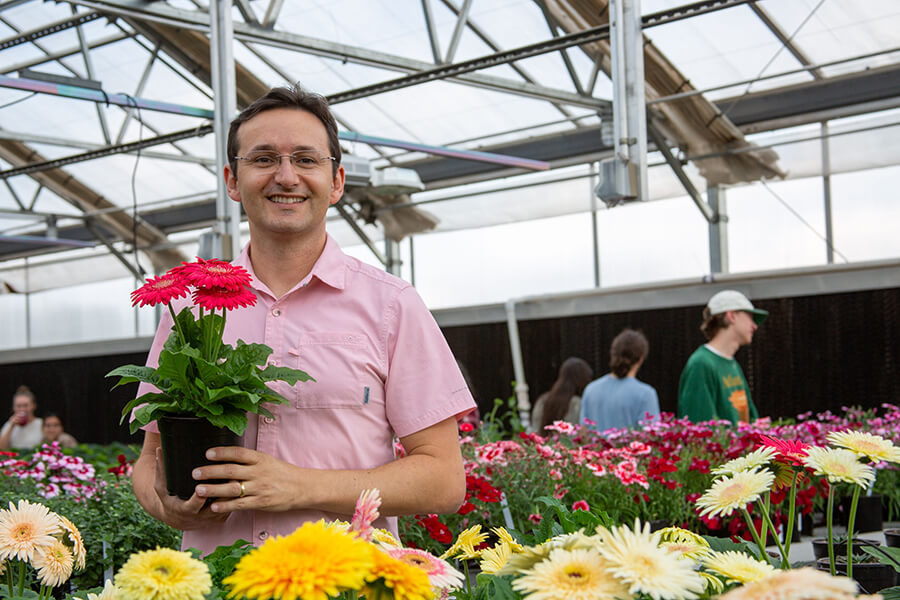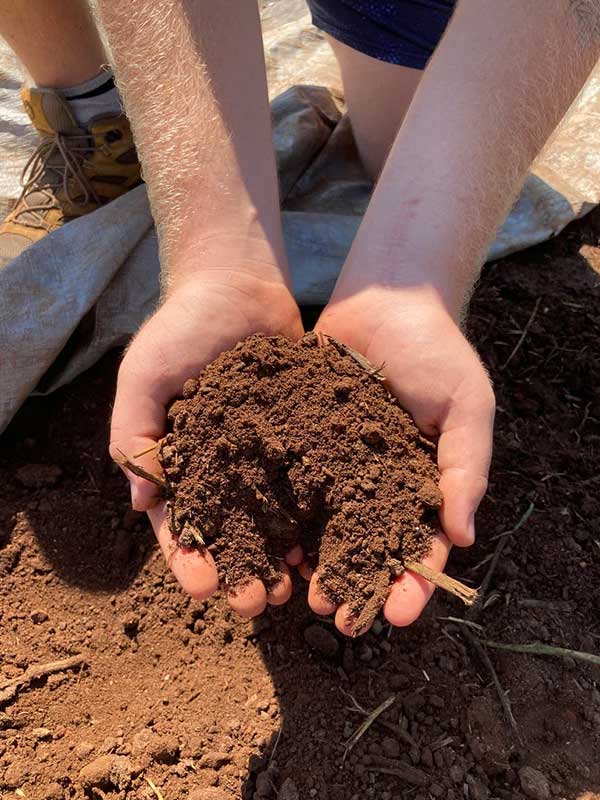As the shorter days of winter approach, the leaves on the trees turn from green to fall colors of gold, bronze, red, orange, brown, yellow and crimson. In a few short weeks, deciduous trees and shrubs in landscapes and natural areas will have lost all of their leaves and prepared themselves to face the rigors of a cold winter.
Home gardeners will be faced with a choice about what to do with the fallen leaves. Do we rake them from our lawns and flowerbeds? Do we put them in bags and leave them for pickup? Do we rake them into piles, set a match to them and let them slowly smolder? Can we make compost or just leave them where they lay?
Don't throw leaves away
Bagging fallen leaves and sending them to the landfill doesn’t make sense for long-term environmental sustainability. It makes sense to remove the leaves so they don’t limit the growth of turfgrass species by obstructing light or creating conditions that favor disease.
Leaves that fall on to areas that are used to grow shrubs or trees may be ignored and left to benefit the soil. Trees and shrubs evolve in environments where no one removes leaves every autumn. In fact, the leaves contribute several beneficial functions including adding mineral nutrients, organic matter and mulch.
When the organic matter covering the soil surface in the woods is disturbed, a keen observer will notice old leaf litter that is extensively colonized by fungi and other microorganisms that live in the soil. Decomposed organic matter adds a rich dark color to the top few inches of soil. The layers of decomposing organic matter provide habitat for many soil insects and water and nutrient holding capacity for plants. This natural mulch layer is just part of nature’s way of recycling carbon and other mineral elements in the leaves.
Compost boosts soil and plants
Perhaps the best way to mimic nature in managed landscapes is to turn leaves into compost. When applied back to the soil, compost provides many of the benefits that are enjoyed by plants in natural environments.
To compost leaves, gather them and make piles that consist of a layer of leaves about four-inches thick followed by a 1- to 2-inch layer of soil supplemented with organic kitchen wastes. These wastes can include items like vegetable peelings, food scraps (without meat or fat) and any sort of waste plant matter or grass clippings. Add another four inches of leaves followed by another layer of soil and kitchen waste and repeat.
Your new compost pile can be as large or small as you like, but a pile 4x4x4 feet will have enough mass to remain warm and allow decomposition to take place throughout most of the winter. Make sure the pile is well watered and moist. The pile can be covered with an old tarp to prevent cooling off.
Now leave the pile to decompose naturally. Natural decomposition will take place as a result of the actions of organisms that are present in the soil. These organisms include fungi and bacteria that will grow and multiply on this rich source of natural, organic matter.
The result is organic soil
The pile will create some heat and reach high temperatures that may cause steam to come from the pile on cold winter days. It may need to be turned once or twice to increase oxygen concentration. Turning the pile will also prevent any anaerobic decomposition that might lead to unpleasant odors.
When you return to the compost pile in the spring you will discover that the volume has decreased by half. You will now have dark-colored organic soil of a crumbly consistency. When spread over the surface of the soil, this new organic matter will provide a source of nutrients to plants.
Many soil scientists believe soil productivity is limited by the loss of organic matter. Anything you can do to return organic matter to the soil is in the long-term best interest of the stability and productivity of our soils. And, you will see the direct benefit in a larger harvest from your vegetable garden.








